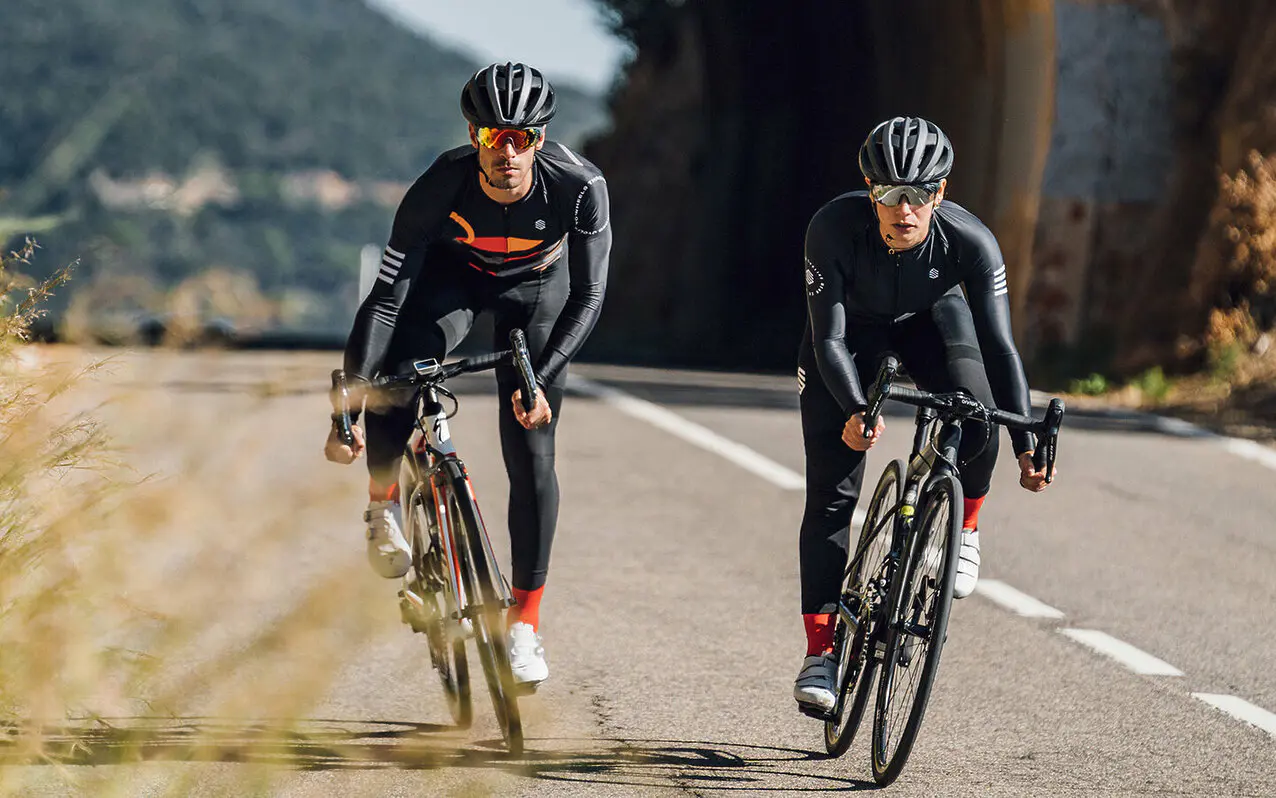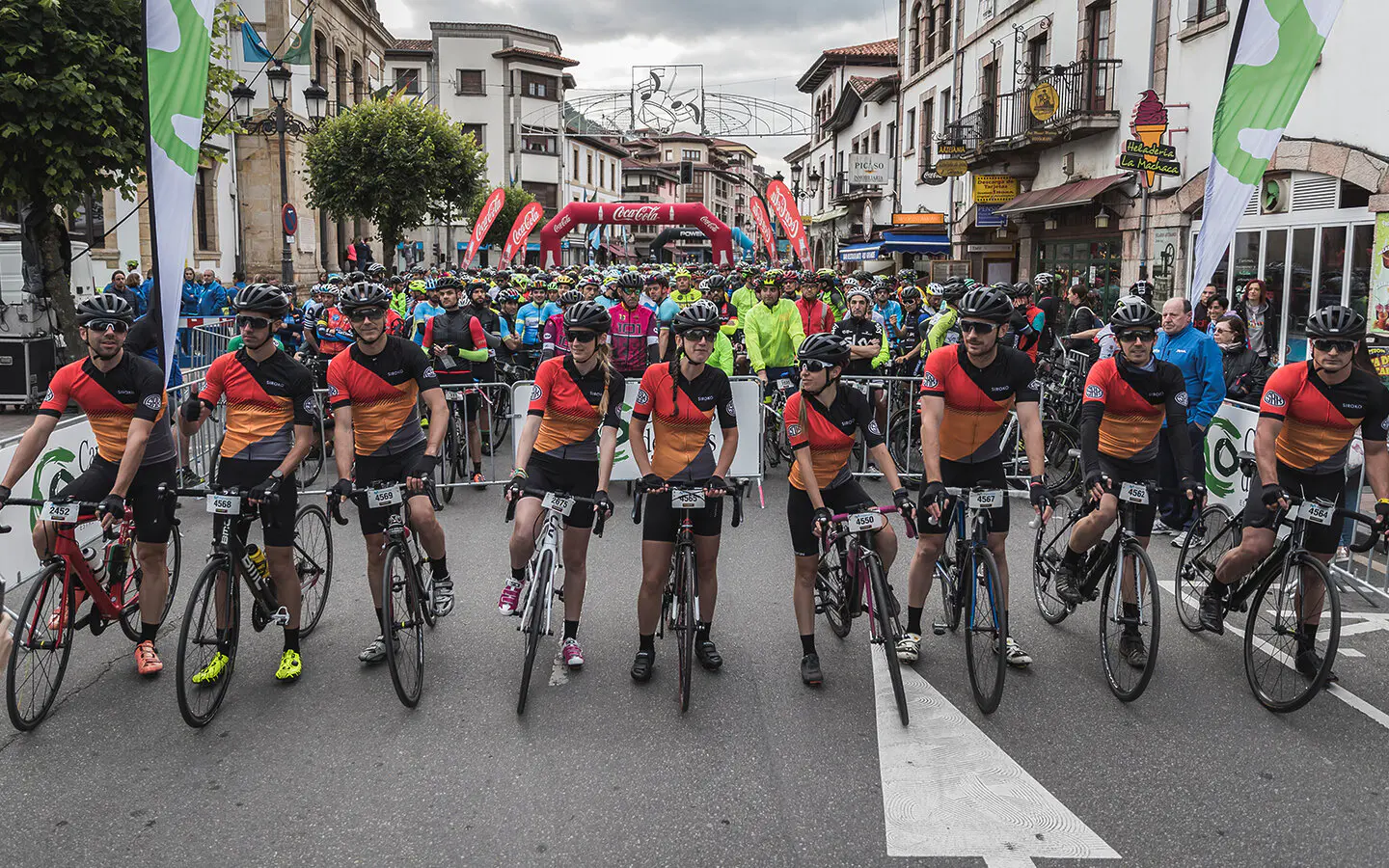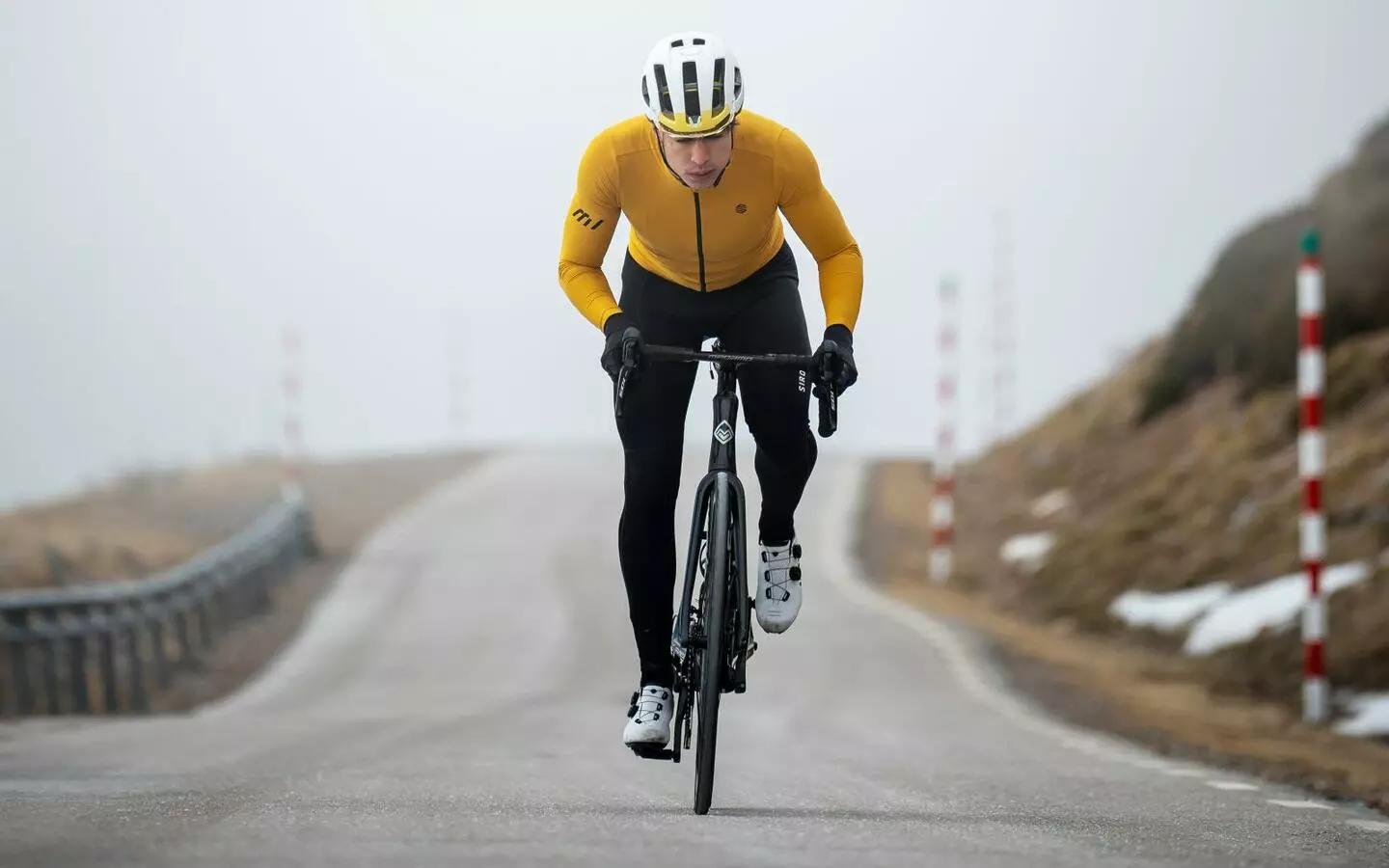For many beginner cyclists, being part of a peloton or simply riding in a big group of cyclists while on a cycling tour or outing is quite the challenge. To make the experience fun and rewarding, as well as to avoid accidents, it is crucial to develop certain skills, gain experience and learn tricks on how to do it safely and effectively. In this blog post, we’ll give you a series of tips and recommendations you can put into practice during tours, outings or long-distance cycling events.
Be on time and properly equipped
Let’s start with the basics: Regardless of whether it’s a tour or a group outing, you have to be there at the indicated time and bring all the essentials. When it comes to a group outing, do not be that one person that always comes late while the rest have to wait for you. During a cycling tour, make sure you arrive early at the starting point to avoid crowds.

When it comes to equipment, make sure you bring your helmet, proper clothing and accessories suitable for the weather conditions that day. Check the forecast to be well prepared, and if this is your first time, make sure to ask for advice or information on the route you’re about to ride.
Most cycling tours provide several refreshment areas, but don’t forget to bring enough water and snacks to reach the first one, or even better, finish the whole route. You never know what type of drinks and food you’ll find and what could upset your stomach.
Also, it never hurts to bring some cash or a credit card with you. Another essential item is your phone, as well as basic spare pieces and tools. Of course, either the tour staff or a fellow cyclist can always help you out, but proper equipment is your personal responsibility.

Be well aware of your surroundings
Always pay attention to the road and the cyclists around you. Chatting with each other can be great, but always stay alert to avoid any obstacles or dangers on the road, as well as to see and listen to any warnings coming from those ahead of you.
There are situations when you’ll have to be especially aware of your surroundings, for instance in cities, towns or intersections, as there are all kinds of obstacles there: speed bumps, sewers, road islands, traffic signs, animals, people, all kinds of vehicles… Be careful on descents as well, as speed leaves almost no room for reaction. In all these cases, you should be as concentrated and alert as possible, with both hands on the handlebars and your fingers ready on the brake levers.
Warn the rest of the group
In a peloton or a big group of cyclists, only the ones that lead it can see the obstacles ahead. The rest of the group can’t see anything, and this is why using hand or verbal signals (saying words out loud such as ‘speed bump’, ‘pothole’, ‘car’ etc.) is key to warn them of dangers on the road. You should also do this if you have a flat tire and need to stop or move aside. In the professional peloton, riders usually stop on the right side.
Keep formation
Make sure to maintain your position within the group at all times, and do not move abruptly to the sides. The more predictable you are, the better. You should always keep a lineal direction, and if you want to move to the sides, do it slowly and gradually so that the rest of the group can anticipate your moves.

How well a peloton flows depends on many factors: road width, number of cyclists, etc. But generally speaking, if there’s enough space, the sides are used to move forward within the group and the center to go back. Riding in a group requires a lot of patience and cooperation. You have to be willing to adjust your rhythm and your position within the team to make space for other cyclists and properly enjoy the benefits of riding in a peloton.
Maintain a steady speed
Aside from avoiding abrupt swerves, you should also avoid sudden changes in speed, especially sudden braking, as this can cause accidents. Try to maintain a constant speed that is comfortable for you. If you are pushing your limits constantly, maybe this is not the right group for you, and you’ll be putting yourself and the others at risk.
In contrast, if you feel like you have to brake too often it might be because you’re using the wrong gear, or that the group is riding slower than you’d like. If you’re riding at the wrong speed, you’re wasting a lot of energy and you should switch gears so as to maintain a safe distance between you and the cyclists ahead, and stop pedaling if you get too close to them. If the group is too slow for you, you could find a spot at the front of the peloton and lead the way, but remember you’re not in a race or a competition, and the peloton must ride in good harmony.
Be careful riding out of the saddle
In connection with the previous tip, a quite common practice among cyclists in a peloton (especially in steep climbs) is riding out of the saddle without changing gear, which leads to unintended slowdowns. This might result in a so-called “kickback”, meaning your rear wheel “kicks” backwards toward or into the front wheel of the cyclist behind you. This way you’re running the risk of tapping or overlapping wheels and causing a crash.

One way to avoid this type of accidents is to give some sort of signal to the cyclist behind you and let them know you’re about to get out of the saddle. It can be a simple gesture such as waving your hand behind your back or moving your elbows. You should also practice how you get out of the saddle, shifting gears in order to maintain the same power and speed.
Look ahead
This doesn’t mean you should be unaware of everything else, but that your attention should be mostly on the cyclists in front of you. You can also look both sides as well, as you’ll just need a quick head movement to do so.

However, never look back while riding in a peloton or in a group. If you have to do it for some reason, make sure you slow down first, increasing the safety distance with the cyclist in front of you. Make sure your hands are always on the handlebars as well, and turn your head to the front as soon as possible after looking back.
Keep your distance
Keeping a safe distance from the rider in front of you is crucial. If they stop abruptly, this distance will give you enough time to react. The distance depends on your own experience, confidence and skills. Professional cyclists can ride almost touching wheels, with barely any distance between them. However, unless you’re a pro rider, try keeping a distance of one wheel between your front wheel and the rear wheel of the rider in front of you. This way you can stay alert but also enjoy the ride. Then, you can gradually reduce the space up to around 15-20 cm.
On descents, you should increase distance, making it a space of 1 or 2 bikes. This way you get enough reaction time.
Think as a group
During most cycling tours, traffic is either closed or limited by the organization or the authorities, which makes it easier to deal with crossings, traffic signs and lights, vehicles, etc. On other occasions, however, we must ride as a group, following traffic rules. This means that cyclists must think as a group, not as individuals, so as to protect both themselves and their team.
In most cases, the ones leading the group are the ones in charge of the whole group’s safety, such as whether they can all go through an intersection or traffic lights.
In some other cases, a single cyclist’s behavior can affect the rest of the group, for instance, if they insult drivers around them or don’t pay attention to traffic signs, therefore causing an accident.

In a nutshell, in order to safely and effectively ride in a peloton or in a group, the key is: having constant and clear communication with the rest of cyclists, a consistent formation, enough space between bikes, being predictable in all your movements and keeping yourself alert and concentrated while on the road. Besides, if we’re looking for a successful and enjoyable cycling experience, we should always be fully equipped, patient, considerate and understanding of the rest of the group.





Pingback: What Is a Cycling Peloton - eBikeAI